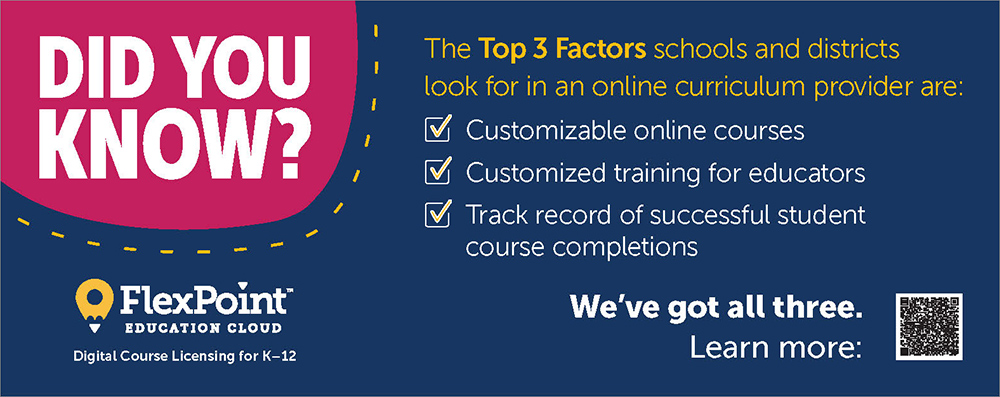Budget season is ramping up as the Legislature begins consideration of Gov. Gavin Newsom’s January Budget Proposal. Despite a projected budget deficit, leadership in the Legislature has affirmed their commitment to protecting TK-12 education funding and the Governor’s budget continues many of the commitments the state has made over the past several years without any discretionary withdrawals from the Proposition 98 rainy day fund.
“As the budget cycle moves forward, CSBA will focus advocacy on defending the historic gains made in education funding and pursue additional investments to address the school staffing shortage, provide support for schools to combat cyberattacks, ensure adequate facilities funding for the expansion of transitional kindergarten and offer pension relief for school employers,” said CSBA CEO & Executive Director Vernon M. Billy.
The Governor’s budget proposes $108.8 billion in Proposition 98 funding for 2023–24, a decrease of approximately $1.5 billion relative to the 2022 Budget Act. The budget also proposes a cost-of-living adjustment (COLA) of 8.13 percent for all programs, providing an additional $4.2 billion for the Local Control Funding Formula, $51.7 million for county offices of education and $669 million for all other categorical programs that receive COLA.


On Jan. 10, CSBA’s Education Legal Alliance, which represents nearly 1,000 school districts and county offices of education throughout California, filed a lawsuit against the California State Board of Education (SBE). CSBA’s lawsuit supports the Napa Valley Unified School District’s (NVUSD) position in its litigation related to the Mayacamas Charter School petition. Among other claims, CSBA challenged the SBE for “exceeding its authority and improperly substituting its judgment for the discretionary judgment of the governing board of the Napa Valley Unified School District and the Napa County Board of Education.”
The litigation involves the SBE decision reversing the denial of the Mayacamas Charter petition by both Napa Valley USD and Napa COE per the terms of Assembly Bill 1505, a charter school reform bill signed into law in October 2019. AB 1505 was the subject of extended negotiations between legislators, the Governor’s office, the State Superintendent, labor unions, state education associations, parent groups and supporters and critics of charter schools. CSBA was actively involved in the legislative process leading to the enactment of AB 1505, which resulted in the establishment of a new framework for transparency and delegation of authority related to charter schools, including the charter authorization and appeal process, and limiting the authority of the SBE to reconsider charter petition appeals.

Troy Flint | tflint@csba.org
Editorial Director:
Kimberly Sellery | ksellery@csba.org
Marketing Director:
Andy Rolleri | arolleri@csba.org
Staff Writers and Contributors:
Alisha Kirby | akirby@csba.org
Heather Kemp | hkemp@csba.org
Teresa Machado | tmachado@csba.org
Kristin Lindgren | klindgren@csba.org
Greg Francis | gfrancis@csba.org
Director of Graphic Design & Branding:
Kerry Macklin | kmacklin@csba.org
Senior Graphic Designer:
Amanda Moen | amoen@csba.org
Susan Markarian | Pacific Union ESD
President-elect:
Albert Gonzalez | Santa Clara USD
Vice President:
Bettye Lusk | Monterey Peninsula USD
Immediate Past President:
Dr. Susan Heredia | Natomas USD
CEO & Executive Director:
Vernon M. Billy
California School News (ISSN 1091-1715) is published 11 times per year by the California School Boards Association, Inc., 3251 Beacon Blvd., West Sacramento, CA 95691. 916-371-4691. $4 of CSBA annual membership dues is for the subscription to California School News. The subscription rate for each CSBA nonmember is $35. Periodicals postage paid at West Sacramento, CA and at additional mailing office. POSTMASTER: Send address changes to California School News, 3251 Beacon Blvd., West Sacramento, CA 95691.
News and feature items submitted for publication are edited for style and space as necessary.

Being a board member is a full-time job, often disguised as a volunteer public service opportunity, so it’s understandable that many trustees are reluctant to look beyond the considerable governance responsibilities of their board. Yet, statewide advocacy, as daunting as it may seem, is a critical part of serving as a local trustee. Our legislative advocacy creates the very context in which we operate as district and county board members and our actions have the potential to shift that context in a positive direction that makes our work easier and enables us to do more for students. If we fail to engage vigorously with our representatives in Sacramento, however, then policy and legislative conditions will drift further from what’s conducive for good governance and continuous improvement in our public schools.
Resources

February is Black History Month, but local educational agencies and organizations from around the state are taking steps to support Black students’ success year-round.
The barriers and systemic racism facing Black students throughout their educational journeys, such as lack of access to resources, quality learning materials and qualified teachers, and disproportionate punishment, are well documented. However, many LEAs are making moves to advance equity and academic attainment.
Initiatives range from introducing high schoolers to historically Black colleges and universities (HBCUs) through campus tours to launching a program to earn college credit from an HBCU while in high school to the implementation of Black student success frameworks in districts.

In its 2022 session, the California Legislature enacted a number of bills, signed by Gov. Gavin Newsom, that impact the obligations of school employers in the state. These bills cover a number of subjects from labor to holidays to safety. CSBA’s Legal team has briefly summarized some of the key new laws so that members are familiar with the obligations these new statutes place on them.
Governance
Video storytelling gives a glimpse of life in various districts. Narrated by trustees, the videos explore local educational agencies’ pandemic response and recovery plans; district values, goals, accomplishments and priorities; the importance of school boards’ work and board members’ “why.”
Zachery Ramos has been a board member in Merced County’s Gustine Unified School District since 2020. His time as a student in the LEA now informs how he performs his duties as a trustee.

“I spent almost 20 years as a board of trustees’ member in three different rural, small school districts,” said Tom Wheeler, a current Madera County Board of Supervisors member. “Between busing, travel distances, utilities, 80-plus percent of your budget going to staff — it’s really hard to balance your budget and give everything you can for your students to succeed.”

Opioids are a class of drugs that reduce pain. Some, including oxycodone (e.g., OxyContin), hydrocodone (e.g., Vicodin), morphine and methadone are prescription medications that are often abused. There are also illegal opioids such as heroin, which has traditionally been the main cause of opioid overdoses, and fentanyl, which has sharply boosted the risk of overdoses as it becomes increasingly available.
As a member of a school board governance team, few situations are more sensitive than a district delivering March 15 layoff notices. The March 15 notice is a formal, written announcement from a school district to employees informing them that they may be released for the following school year beginning July 1. It is essential for governing board members to be familiar with information about the March 15 notice, its implementation process and the strict legal requirements attached to the process.
Prior to 2022, classified employees could be laid off at any time during the school year with at least 60 days’ notice, due to lack of work or lack of funds. Effective Jan. 1, 2022, Assembly Bill 438 modified the Education Code’s classified layoff statutes, creating additional protections for classified employees and changing how school districts must conduct classified layoffs.

Comprehensive community schools are needed now more than ever, according to experts who spoke during a Jan. 12 webinar hosted by the Center for Universal Education to launch the Community Schools Forward Task Force’s essential community school resources.
In light of the immediate and lingering impacts of the pandemic on students, families and staff, the community schools model has been identified as a strong strategy to address wide-ranging needs.
“We know that coming out of COVID, there are still long-lasting impacts on inequality, learning, children’s mental health — and the vast needs require a strategy that is commensurate to them. Narrow or short-term remedial approaches, while useful, won’t actually solve the core problems.” said Rebecca Winthrop, a senior fellow and director of the Center for Universal Education at the Brookings Institution. “The community schools strategy is, in my estimation, one of the best strategies that meets the moment. If schools can partner really effectively with the broad ecosystem of actors … it can help the financial sustainability of the holistic approach to education because school systems aren’t the only ones that have child-focused budgets, and they can blend and braid funding from other sectors.”

In addition, what is usually a routine action of assigning a number to an SBE-approved charter school petition might have been complicated by a lawsuit being brought against the State Board by the Napa Valley Unified School District for violating the terms of the Charter Schools Act updated by Assembly Bill 1505. The reforms in the bill allow the State Board to overturn local denials only if it finds the local districts abused their discretion in rejecting a charter. CSBA’s Education Legal Alliance has also filed a lawsuit against the State Board challenging its decision to reverse the decisions of the Napa Valley USD governing board and the Napa County Board of Education to deny the charter (Learn more about the ELA’s lawsuit on page 2). The lawsuit was not mentioned by the SBE, however, and a number was assigned.

The resulting report, An Unfinished Canvas, found that “although some California schools have excellent arts programs in place, with well-trained teachers, standards-aligned curricula, and high-quality facilities and materials, most do not. Instead, arts education in California is plagued by a lack of funding, underprepared elementary-level teachers, and inadequate facilities. It suffers from uneven implementation and is often crowded out by other curricular demands. As a result, most students in California do not receive instruction at the level required under state policy.”
Access to reliable home-to-school transportation for students improves attendance and cuts rates of chronic absenteeism, particularly for students from economically disadvantaged backgrounds. Recent research from the University of Pennsylvania highlights evidence-based strategies to combat chronic absenteeism and found that safe and reliable school transportation ranks among the most impactful approaches. Thanks in part to CSBA advocacy, the 2022 California Budget Act included critical provisions for transportation in California school districts and county offices of education.
The legislation contains $637 million of ongoing funding for home-to-school transportation. This is the first increase to school transportation since 2013 and adds a cost-of-living adjustment (COLA) beginning in 2023–24. Starting with the 2022–23 fiscal year, local educational agencies can be reimbursed up to 60 percent for eligible home-to-school transportation expenses for prior year eligible transportation spending and for their prior year Local Control Funding Formula transportation add-on. The act also included $1.5 billion in one-time funds over the next five years for LEAs to convert buses from gas to electric.

CCBE’s County Board Governance Workshop is a two-day event held March 10–11, 2023, that will empower county board members to serve during challenging times. County trustees and superintendents can expect to gain in-depth county-focused learning opportunities on community engagement; elections; appointments and redistricting; learning loss; and innovative ways to re-engage students. Register at www.theccbe.org/en/Events/CountyBoardGovernanceWorkshop.
The Sonoma County Office of Education on Nov. 30, completed the purchase of a residential property in Santa Rosa, adjacent to the county office’s Amarosa Academy campus.
The COE will be asking the City of Santa Rosa to rezone the land — purchased for $630,000 — to allow for construction of a high-density housing development targeted toward educators and other public employees.
Current plans, which are subject to revision, call for the building of at least 60 rental units. The housing, known as Casitas de Amarosa, will be on the same parcel as Amarosa Academy, a community school providing an alternative learning environment for students in grades 7–12 who are experiencing difficulties in a traditional school setting.
Institute for New and First-Term Board Members
Board Presidents Workshop
Feb. 28
Board Presidents Workshop
Orientation for New Trustees
MIG Course 2: Student Learning & Achievement/Policy & Judicial Review
Feb. 21
Orientation for New Trustees | Sacramento
March 8
Orientation for New Trustees | Redding
March 10–11
CCBE County Board Governance Workshop | Sacramento
Board Presidents Workshop | Rancho Cucamonga
2023 Coast2Coast Federal Advocacy Trip | Washington, D.C.










